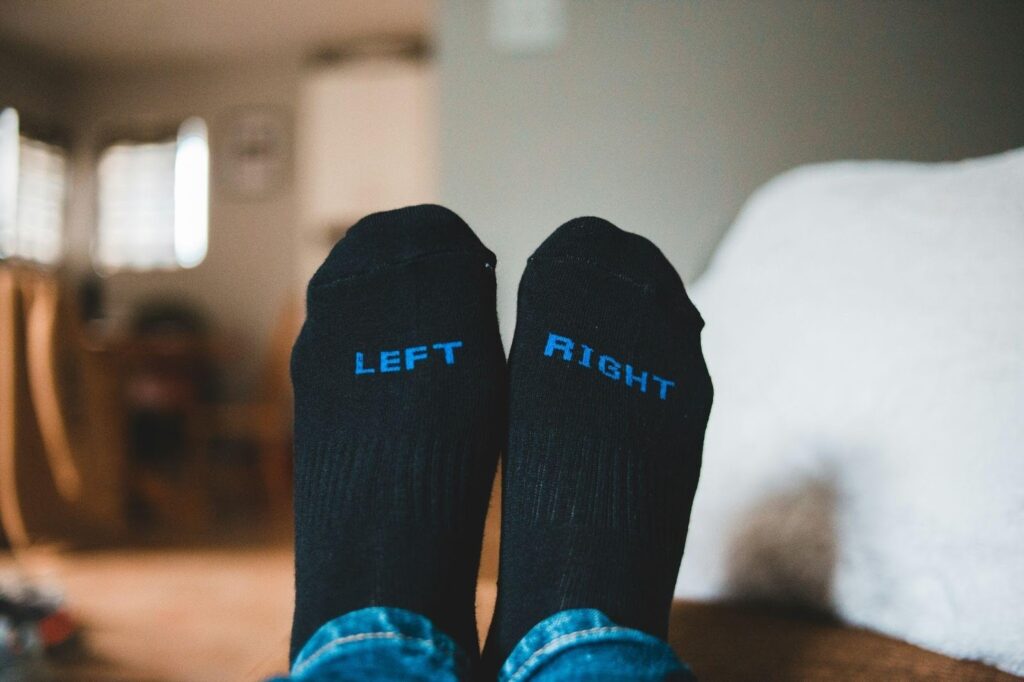
Your Health Magazine
4201 Northview Drive
Suite #102
Bowie, MD 20716
301-805-6805

More Pain Management & Rehabilitation Articles
Do Flat Feet Affect Your Knees And Back?

Image Source: Erik Mclean, Unsplash
Are you experiencing consistent pain in your knees and back? It may be a case of flat feet, also known as pes planus. When your feet lack proper arch support, the problem can lead to persistent aches and pains.
Learn more about the mechanics of flat feet and how to find proper relief.
Overpronation and Rotation
If you live with flat feet, you’ll notice that your feet pronate and rotate even more. This overpronation leads to excessive inward rolling, which forces your entire leg to rotate, resulting in upper-body discomfort. In these cases, a podiatrist may recommend custom orthotics for flat feet for pain relief.
Constant inward foot rotation also puts unnatural stress on your knee joints, leading to knee pain, in addition to leg pain. You may also notice pain under your kneecap; this is caused by additional twisting and strain on your ligaments and cartilage.
Rotational issues with flat feet can also travel up to your hips and lower back, causing misalignment. This leads to the following problems:
- Poor posture
- Changes in your spinal curve
- Muscle strain
- Increased lower back curve (lordosis)
- Chronic pain
Leaving these issues unaddressed increases inflammation in the body as your body attempts to adjust to the misalignment.
Stress and Muscle Imbalances
Since your feet and joints must work harder to compensate for the extra strain, your muscles also experience significant imbalances. Hamstrings and calf muscles can become particularly tight and fatigued. Meanwhile, the muscles that support your foot arch also grow weaker.
With proper medical intervention, muscle imbalance can worsen poor posture and persistent pain.
Signs of Pain Caused By Flat Feet
If you want to know if flat feet are causing you pain, consult a doctor for a professional opinion. You can also watch for signs and discuss them with your doctor.
For example, a telltale sign is noticeable pain in your feet, as well as localized pain in the arch and heel. Foot pain may also be accompanied by pain in your hips, knees, or lower back region.
If you’re developing shin splints, flat feet may be the underlying cause. Ankles or arches that look more swollen than usual may also be caused by flat feet.
Are you feeling more tired than usual, especially after standing and walking? Talk to your doctor about flat feet.
Tips for Managing Flat Feet
There are a few ways to manage flat feet, starting with the right footwear. You need highly supportive shoes with proper cushioning to provide stability when you walk and stand. Avoid flat-soled shoes and heels; what you need is arch support.
Shoe inserts are available at major department stores and shoe stores. You can also talk to your doctor about orthotics or try over-the-counter orthotics from a drug store.
The next strategy is foot strengthening. You can’t change the shape of your foot or arch, but you can make your feet stronger, which combats misalignment when walking.
Start with the following exercises:
- Calf raises
- Toe raises
- Toe curls
These exercises also improve ankle strength to improve overall stability. For extreme pain, talk to a physical therapist about advanced exercises that can also improve your gait and posture.
Discover Relief for Flat Feet Pain
Talk to a doctor about persistent pain in your feet to prevent further pain due to poor posture, instability, and gait issues. Identifying problems early is the key to managing chronic pain effectively from the start. Coupled with orthotics and exercises, you can start to regain strength in your feet and restore balance to your body.
Other Articles You May Find of Interest...
- Do Flat Feet Affect Your Knees And Back?
- Long-Term Health Effects of Personal Injuries
- Effective Ways to Alleviate Soreness in Inner Thighs
- The Hidden Impact of the Sacral Fat Pad on Your Health
- Causes of Arm Pain When Sneezing and What You Should Know
- Can I Take Ibuprofen With Amoxicillin?
- Common Questions About Pain and Suffering Answered














